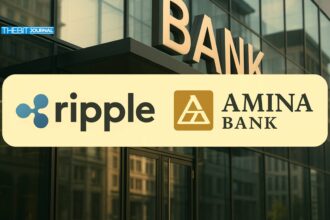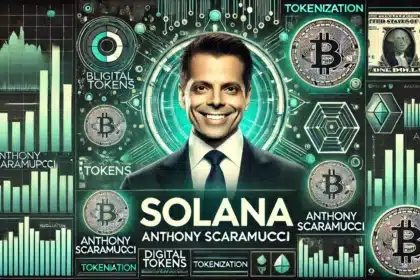The crypto industry witnessed a surprising event this week as reports surfaced that over $330 million worth of BTC was laundered through Monero. This high-profile laundering operation not only shook the crypto market but also fueled a rally in Monero’s price. With increasing regulatory scrutiny on privacy coins and the upcoming Monero protocol upgrades, experts are skeptical about the consequences of this event.
BTC Laundered Through Monero: Details of the Massive Theft
Blockchain investigator ZachXBT first flagged the theft involving 3,520 Bitcoin, valued at approximately $330.7 million, which was allegedly transferred from a victim’s wallet to a suspicious address. Following the transfer, the BTC was laundered through Monero using more than six instant exchanges, rapidly converting Bitcoin into XMR to obfuscate transaction traces.
The choice to have BTC laundered through Monero was unsurprising given Monero’s reputation for highly confidential and untraceable transactions, often making it the go-to asset for privacy-centric activities.
| Metric | Details |
| Amount Stolen | 3,520 BTC |
| Estimated Value | $330.7 million |
| Number of Exchanges Used | 6+ instant platforms |
| Primary Token Swapped | Monero (XMR) |
Monero’s Explosive Rally Amid BTC Laundering
The fallout from the recent Bitcoin laundering through Monero’s network triggered a sharp and dramatic reaction across the crypto markets. Monero (XMR) saw its price surge by over 50%, briefly reaching a multi-year high of $329 as massive buy pressure overtook bearish sentiment.
At the time of writing, XMR was trading around $269.96, marking a strong 18.23% gain in the past 24 hours, according to CoinMarketCap. This sudden price explosion was further fueled by the liquidation of over $1 million in short positions, intensifying bullish momentum and reinforcing Monero’s reputation as the dominant privacy-focused cryptocurrency.

Technical Tailwinds: Upgrades Behind XMR Optimism
Beyond the BTC laundering shock, Monero’s rally is also underpinned by technical improvements. The EP159 and EP160 upgrades aim to make Monero more “compliance-friendly” without sacrificing privacy. These enhancements would allow users to prove transaction legitimacy without revealing critical data, aligning Monero more closely with Europe’s MiCA (Markets in Crypto-Assets) regulations.
The development could eventually lead to major exchanges like Binance and Coinbase relisting Monero, strengthening the asset’s institutional credibility.
The prospect of regulatory clarity around privacy coins is adding further fuel to the narrative surrounding BTC laundered through Monero.
| Upcoming Upgrade | Purpose | Expected Impact |
| EP159 | Enhanced compliance without exposing transaction details | Likely relisting on compliant exchanges |
| EP160 | Improved privacy-preserving proofs | Stronger market acceptance |
Following the news of BTC laundered through Monero, other privacy-centric tokens such as Zcash (ZEC), Dash (DASH), and Decred (DCR) also saw notable gains. While not matching Monero’s 50% surge, these altcoins benefited from renewed interest in anonymous transactions amid heightened surveillance fears.
Law Enforcement Cracks Down Despite Monero’s Privacy
In a surprising twist, Finnish authorities made headway in a separate case involving Monero. The National Bureau of Investigation traced XMR transactions linked to Julius Aleksanteri Kivimäki, accused of hacking a psychotherapy firm’s database.
Despite Monero’s privacy safeguards, investigators successfully pieced together a trail involving Bitcoin ransom payments that were later laundered through Monero and reconverted back into Bitcoin through Binance.
Factors Driving Monero’s Price Surge
Multiple elements converged to drive Monero’s impressive price surge following the BTC laundering event. A major catalyst was the liquidation of over $1 million in short positions, which intensified upward momentum as bearish bets were rapidly wiped out. At the same time, growing speculation about Monero’s potential relisting on major exchanges, gassed by upcoming MiCA-compliant upgrades, injected additional optimism into the market.

Broader sentiment across the privacy coin sector also played a role, with tokens like Zcash (ZEC), Dash (DASH), and Decred (DCR) recording notable gains as investor appetite for privacy-focused assets strengthened. Furthermore, Monero attracted increased safe-haven demand as traders sought refuge in anonymity-preserving cryptocurrencies amid mounting regulatory pressures on mainstream digital assets.
Conclusion: BTC Laundered Through Monero – A Double-Edged Sword
The case of BTC laundered through Monero reveals both the strength and the vulnerability of privacy coins. While Monero’s untraceability remains a prized feature, incidents like these invite deeper regulatory scrutiny. Moving forward, Monero’s survival and success will likely hinge on its ability to balance user privacy with evolving global compliance frameworks.
For now, Monero remains at the epicenter of the privacy vs. regulation debate, with its recent price surge serving as a stark reminder of how quickly sentiment can shift in crypto.
Glossary
BTC Laundered Through Monero: The process of converting Bitcoin into Monero to hide transaction traces.
XMR: The native cryptocurrency of the Monero network.
TVL (Total Value Locked): Total assets secured in a protocol or ecosystem.
MiCA: Europe’s comprehensive crypto regulatory framework.
EP159/EP160: Proposed Monero upgrades to improve compliance and privacy simultaneously.





























